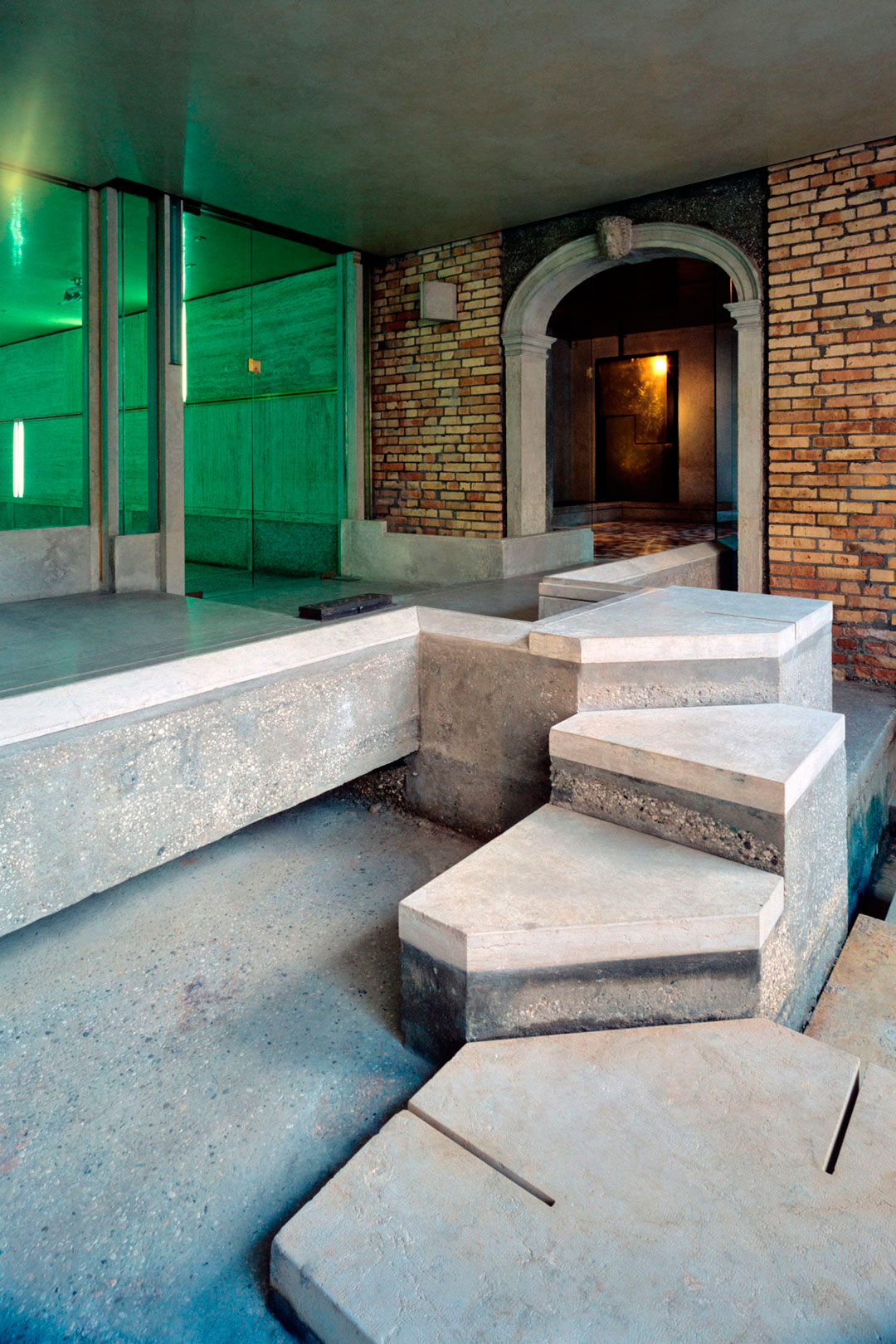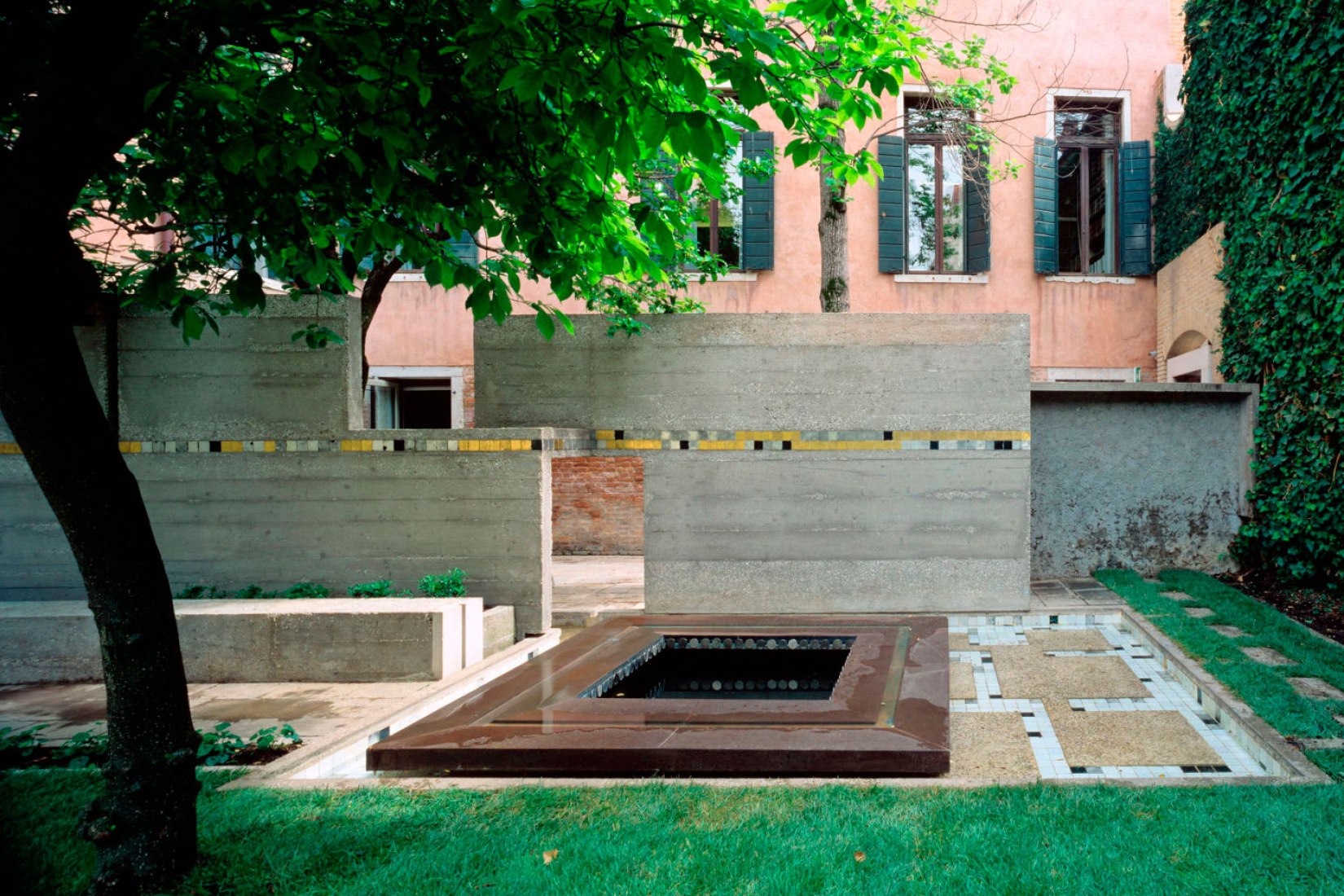Carlo Scarpa Fondazione Querini Stampalia Capturing Architecture
Castello 5252, 30122. Venice. T. +39 041 2711411. Open map. Opening hours. Collections and Exhibitions. Tuesday to Sunday, 10 am to 6 pm Ticket office closes at 5.30 pm Closed Mondays. Library and Periodicals Rooms. Tuesday to Friday, 10 am to 8 pm Saturdays, Sundays and holidays, 10 am to 7 pm Closed Mondays.

Museum Querini Stampalia foundation by Carlo Scarpa Archiobjects
The Fondazione Querini Stampalia welcomes you and surprises you.. The architectural works by Carlo Scarpa, Valeriano Pastor and Mario Botta in the sixteenth-century palace and Michele De Lucchi's interiors for the new museum spaces express the Querini's mission: an exceptional educational programme regarding beauty, quality, connecting.

The architecture of details Palazzo Querini Stampalia by Carlo Scarpa
Carlo Scarpa, Fondazione Querini Stampalia, renovation of the museum garden, 1949-1959, Venice, Italy. ArchiVibe. Fondazione Querini Stampalia was established in 1869 by Count Giovanni Querini, the last descendant of the Querini Stampalia family. It used to be a family home for the prominent Venetian Querini Stampalia family.

The architecture of details Palazzo Querini Stampalia by Carlo Scarpa
Portego Fondazione Querini Stampalia Tre le tantissime opere del museo, vorrei qui concentrarmi proprio sull'intervento architettonico di Carlo Scarpa, e in particolare sulla grandissima sensibilità del maestro in rapporto a due elementi essenziali della città di Venezia: l'acqua e la passione antiquaria.
Carlo Scarpa Fondazione Querini Stampalia Capturing Architecture
How Carlo Scarpa bridged past and present. The renovation of the Fondazione Querini Stampalia is a great example of how he integrated the new with the old. Carlo Scarpa (1906-78) was a Modern architect with an almost sacred respect for the ancient. This outlook came from his long association with Venice, his place of birth.

The architecture of details Palazzo Querini Stampalia by Carlo Scarpa
Carlo Scarpa (June 2, 1906 - November 28, 1978) is best known for his instinctive approach to craft and materials, with an eye for exquisite detailing.. the President of the Fondazione Querini.

Fondazione Querini Stampalia by Carlo Scarpa
Access to the Carlo Scarpa Area of Fondazione Querini Stampalia via the Carlo Scarpa Bridge across the canal. See the details in the sliding images above.. 19 artists in 2 parallel national presentations at the Fondazione Querini Stampalia and at Riva Sette Martiri. Also interesting in UiU: Art Destination Jordan. Photo tours and information.

Fondazione Querini Stampalia, Carlo Scarpa, Venezia / Venice Carlo
Carlo Scarpa. Querini Stampalia Foundation. In 1949 the Presidential Council of the Foundation decided to start the restoration of some areas of the Palace to Manlio Dazzi, then director, entrusted to Carlo Scarpa the task of rearranging part of the ground floor, rendered unusable by the frequent phenomenon of high water, and the back garden.

The architecture of details Palazzo Querini Stampalia by Carlo Scarpa
Museum Querini Stampalia foundation by Carlo Scarpa. October 28, 2014. The Querini Stampalia foundation is a cultural foundation of Venice commissioned in 1868 by Giovanni Querini Stampalia. There are set up a library, a museum and an area for temporary exhibitions. This is a real institution donated to the city by its benefactor who otherwise.

The architecture of details Palazzo Querini Stampalia by Carlo Scarpa
The Fondazione Querini Stampalia is a cultural institution in Venice, Italy, founded in 1869 at the behest of the last descendant of the Venetian Querini Stampalia family, Conte Giovanni Querini (Count John Querini). Architect Carlo Scarpa designed interior, exterior, and garden elements and spaces on the ground floor of the historic building.

Carlo Scarpa, Fondazione Querini Stampalia, Venezia, 196163 a photo
Carlo Scarpa, the poet of architecture. The surprising modernity of the Scarpa Area has not been obfuscated by its more than fifty-year lifespan. Carlo Scarpa (Venice, 1906 - Sendai, Japan, 1978) is one of the greatest architects of the twentieth century. Between 1959 and 1963 he redesigned the ground floor of the Fondazione, creating a space.

Carlo Scarpa, Mario Botta, Valeriano Pastor, Riccardo De Cal, Francesco
Fondazione Querini Stampalia, Venice The historical residence of the noble Querini family underwent redevelopment as a cultural center with Carlo Scarpa working on the entrance and courtyard. He converted the burdening inflow of water from the canal at the entry into a design feature by using multilevel water basins made of copper and alabaster.

Palazzo Querini Stampalia by Carlo Scarpa, 19611963. Courtesy of
The following story is the second of a series that together forms an homage to a design hero. A short walk from the Olivetti Showroom in Venice, Italy, is the Fondazione Querini Stampalia, a sixteenth-century palazzo that houses the library and art collection of Count Giovanni Querini Stampalia. In 1869 the count left the palazzo and all its.

The architecture of details Palazzo Querini Stampalia by Carlo Scarpa
Book ahead & get your Fondazione Querini tickets on your smartphone with Tiqets.com. Find tickets to other top attractions like Querini Stampalia Foundation in Venice, Italy

The architecture of details Palazzo Querini Stampalia by Carlo Scarpa
The Garden of Carlo Scarpa in the Querini Stampalia Fondation in Venice. In this museum - the only Venetian palace which survived the end of the Republic - you can admire one of the most beautiful gardens of Venice, designed by the famous architect Carlo Scarpa. The project was part of an overall restoration in 1949 on the ground floor of the.

The architecture of details Palazzo Querini Stampalia by Carlo Scarpa
In 1961 Giuseppe Mazzario, a friend and colleague of Carlo Scarpa's University Institute of Architecture, as well as director of the Querini Stampalia Foundation, contacted him for the remodeling of the ground floor and the courtyard of the 16th century palace of the Querini Stampalia Foundation. The project was conditioned on the one hand by.